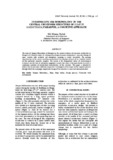| dc.contributor.author | Rashid, Md. Mizanur | |
| dc.date.accessioned | 2010-10-18T09:12:52Z | |
| dc.date.available | 2010-10-18T09:12:52Z | |
| dc.date.issued | 2006 | |
| dc.identifier.uri | http://hdl.handle.net/10361/555 | |
| dc.description.abstract | The ruins of Sompur Mahavihara at Paharpur are the earliest evidence of conscious architecture in Bengali soil. From the nature of existing archaeological remains demonstrate a conscious attempt of space creation with symbolic and metaphoric meaning is clearly discernible. The missing superstructure of the central cruciform mound draws the attention of most of the scholarly studies on this particular monastic complex. The reason is the fragmentary nature of archaeological evidences and the lack of substantial epigraphic records that work as the main thicket to reveal a continuous narrative of architectural characteristics of this structure. This paper is intended to address this lacuna from a different perspective. It attempts to delve deeper on the cognitive process through which the seemingly complicated design of this structure is conceived and materialized. | en_US |
| dc.language.iso | en | en_US |
| dc.publisher | BRAC University | en_US |
| dc.relation.ispartofseries | BRAC University Journal, BRAC University;Vol.3. No. 1 pp. 1-8 | |
| dc.subject | Sompur Mahavihara | en_US |
| dc.subject | Stupa | en_US |
| dc.subject | Stupa shrine | en_US |
| dc.subject | Design process | en_US |
| dc.subject | Vernaculalr built environment | en_US |
| dc.title | Interpreting the Morphology of the central cruciform structure of Sompur Mahavihara, Paharpur; A cognitive approach | en_US |
| dc.type | Article | en_US |

